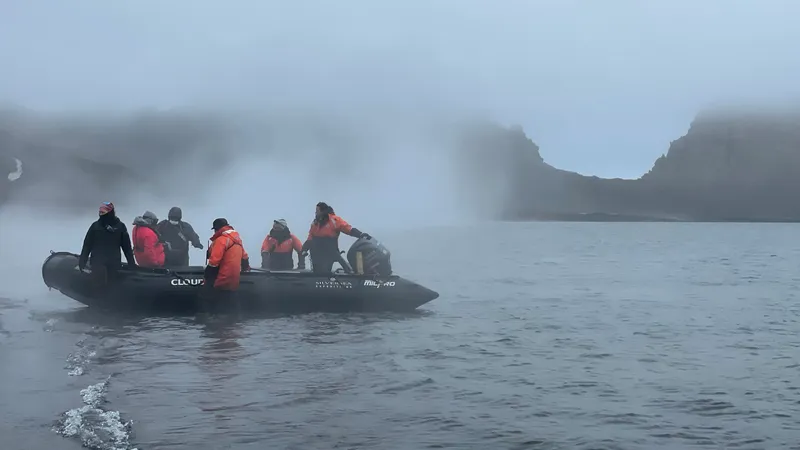What Are Landings?
Landings are excursions that you do from the cruise ship to the land, stepping on the frozen continent. Cruise ships are large ships, carrying at least 100 passengers. This kind of ships can only dock in large ports to drop people off.
Due to the lack of port facilities in Antarctica, smaller boats are used, adding to the adventure. These small boats are called zodiacs. In this post we are talking about the landings done with a zodiac. Before the landings, you will have to ride the zodiac from the cruise ship to the landing site. We have a different posts in which we talk only about false zodiacs and zodiac cruising, and we recommend you to check it out.
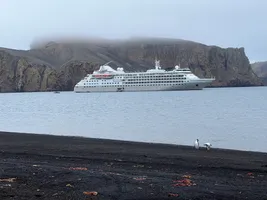
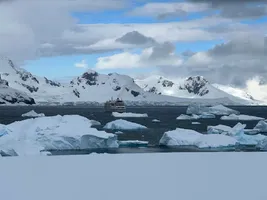
What Does The Landing Involve?
The entire process for landings is more complex than what we see.
The Crew’s Responsibilities
Before any scheduled landing, the crew has to slow and demanding tasks to ensure that everything is safe and sounds, and to prepare the landing site for everyone else.
They start by dropping a zodiac in the water and going out for reconnaissance. Sounds easy, but the zodiac is dropped using a crane from the deck, and boarding has to be done on a small ladder from the ship.

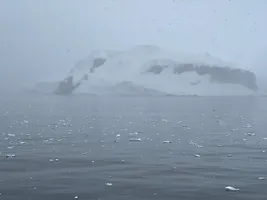
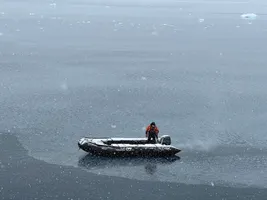
The expedition leader is the one that usually heads out to do the reconnaissance. If the landing site is safe, more crew members go ashore to test and mark the paths that people can walk on. These markings are meant to keep everyone at a safe distance from wildlife. Sometimes where the snow is too deep and hard to walk, paths have to be created.
All of these have to be done before the first landing is scheduled. When everything is set up, the crew starts calling out people based on their boarding group. Everybody that has been called heads out to the boarding deck. This is a lower deck, where the cruise ship can drop a platform which makes hopping on the zodiacs easy.
The Travelers Responsibilities
Zodiacs can carry a limited number of people, and for this reason groups are made for boarding the zodiacs. Depending on your group number, you know the approximate hour when you should be ready for a landing. Gear up in your room with the necessary clothes, and your life vest.
Before boarding a zodiac, people have to put on their landing boots, usually in a dedicated room at the same deck where the boarding happens. Then they line up for boarding the zodiac. Here everybody will undergo some biosecurity, they have a container with biocide that people step in to decontaminate their boots. This measure is everyone’s environmental responsibility preventing the introduction of non-native species to environment of Antarctica. At the next step, a crew member will check that your life vest is put on correctly. Once you’re good to go, you step down some stairs and in the zodiac.
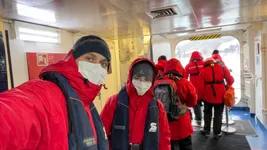
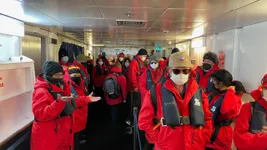
The skipper will take with the zodiac to the landing zone, where more crew members are waiting for you to help you get off the zodiac. They will also inform you of any special notes there might be about that specific landing zone, and the hour when you are supposed to get back.
When your time is up, you will hop on the zodiac the same way you got off. The skipper will take you to the cruise ship where you need to wash your boots before taking them off. As you’ll see there’s a lot of penguin droppings in Antarctica, and washing the boots is essential.

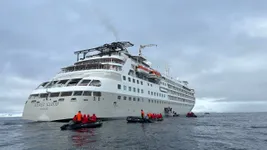
How Is The Landing Done?
The landings can be very different from one another.
Landing Site
The most common landings are the ones where the shore is something like a beach. It can be a sandy or rocky beach. The skipper drives the boat on the beach, until the front bottom of the zodiac touched the ground. Other crew members will hold the zodiac so that it doesn’t move too much and the travelers can get off.
Sometimes the landing is done on a rock edge. Although beaches are easier, if there’s wildlife on the beach, a more difficult landing will be chosen. The skipper will drive the boat into a rocky edge and hold it there while the other crew members help people off the zodiac. It is more of a challenge, with more things that could go wrong, but the crew is made up of professionals. Traveling to Antarctica involves inherent risks, and strict safety protocols are followed during landings to ensure travelers’ well-being.
Rarely you might have a landing site with a dock. We haven’t seen such a landing site in Antarctica, but in the Falkland Islands. The zodiac is tied to the dock and you just have to step off the zodiac and onto the dock.
Wet and Dry Landings
You might have thought if landings on the beach requires you to step in the water. The answer is yes! Ladings are labeled wet or dry depending on wether you have to step in the water or not. Wet landings require you to step in water that is higher than your ankle. Since you’re in Antarctica, the water is freezing cold, and you might be a bit frightened by the idea of stepping in the water. Rest assured, the gear you need for Antarctica is made to handle these landings well.
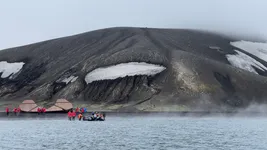
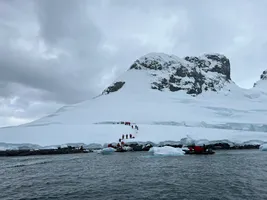
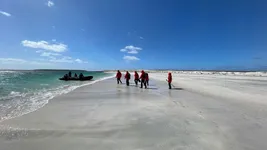
We have a dedicated post with the false Antarctica essential gear, and what makes wet landings possible are rubber boots and good waterproof pants. We recommend you to read that post as well in order to be well prepared. The rubber boots are knee-high, and the waterproof pants should go over your boots, not inside them. The waterproof pants should be wide enough to fit over your boots and should have a closing system at the ankle to tighten them up so they don’t easily lift over your boots. When you step in the water, the waterproof pants will stick to your boots, not allowing the water to go up.
For the dry landings you don’t necessarily need to take the rubber boots with you. However, the expedition leader will inform you better about this. Some landings might have a dry and a wet landing, and even if they drop you with a dry landing, they might pick you up with a wet landing.
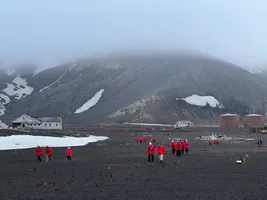
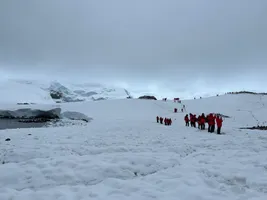
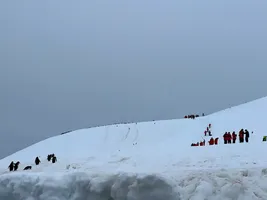
What Can Impact a Landing?
Landings in Antarctica are very much weather dependent. Even if cruises to Antarctica are possible, we still have to accept that Antarctica’s climate is extreme. It can be pleasantly warm and sunny, but it can also be freezing cold, with high winds and harsh conditions. Weather is unpredictable and can impact scheduled landings.
Wind
If the wind is too strong, it might not even be safe to get out on deck, not to mention do a landing. This is a very unfortunate event that will keep everybody indoor for as long as it takes.
Swells
If the swells are too big, then it is not safe to drop the zodiacs in the water from the cruise ship.
Visibility
If the visibility is too low then skippers might have a hard time getting back to the cruise ship. Everybody on that zodiac is in danger. Low visibility might be caused by fog, and snow fall.

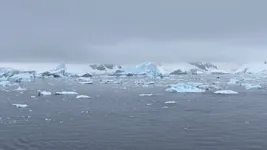
Ice
The shores of Antarctica get covered by a huge sheets of ice during the winter season. This sheet of ice starts melting and breaking apart during summer. Depending on the water currents, these sheets of ice can block landing sites. Even when a landing site is not blocked, the water currents still have to be watched because ice could move in while the zodiacs are at the landing zone, trapping them. It is impossible for zodiacs to move against those huge sheets of ice being pushed towards them by water currents.
Conditions Ashore
The landing needs to be done on stable ground. As you can imagine, there’s a lot of snow and ice in Antarctica. Usually the landing sites are chosen and well known locations where this kind of problems are less likely. Depending on the month of the year you’re going to Antarctica, there might be more snow and ice in some landing sites, making the ground unsafe to step on.
Wildlife
Wildlife doesn’t care about people’s landing sites. They just occupy whatever space they feels is better for them and for rising their babies. One of the most important conditions for a landing is to not disturb wildlife. If a landing would scare away or stress the wildlife, then the landing will be canceled.
We write to help you prepare for your expedition to Antarctica. Good preparation is the key to successful travel. Checkout out our other posts about Antarctica:
 Travelfoss
Travelfoss
Related Travel Articles
- What to Pack for Antarctica Cruise - Complete Packing List
- 7 Unique Travel Destinations for 2024
- Top Questions About Antarctica Expedition Cruises
- How To Choose Your Cruising Company To Antarctica
- What Are The Excursions You Can Do In Antarctica?
- What You Should Know Before Booking a Cruise to Antarctica
- The Best Expedition Cruises in Antarctica
- What To Expect From Zodiac Cruising In Antarctica
- What You Need To Know About Kayaking in Antarctica
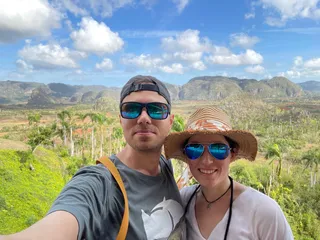
Writing free, independent and personal travel content since 2021. If you appreciate what we do, then you can return the favor by using the affiliate links below.
- Get your accommodations on Booking.com
- Buy your gear and gadgets from Amazon
- Book flights using Expedia
- Book activities on Get Your Guide
- Book guided trips on G Adventures
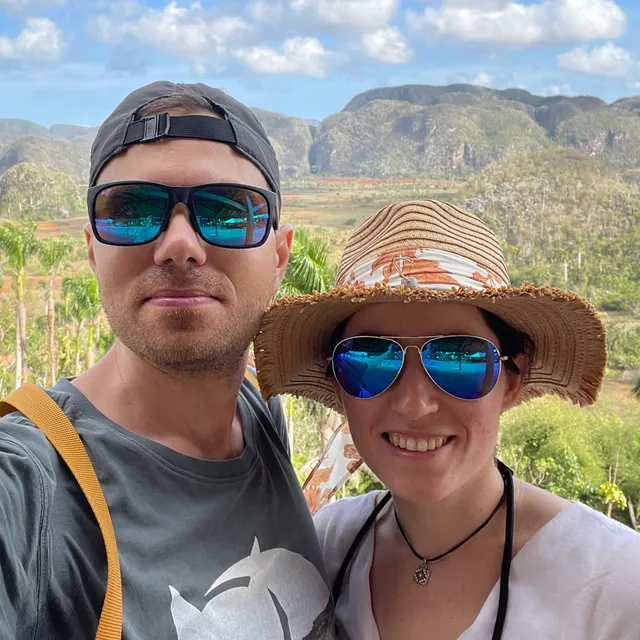
Writing free, independent and personal travel content since 2021. If you appreciate what we do, then you can return the favor by using the affiliate links below with no cost for you.
